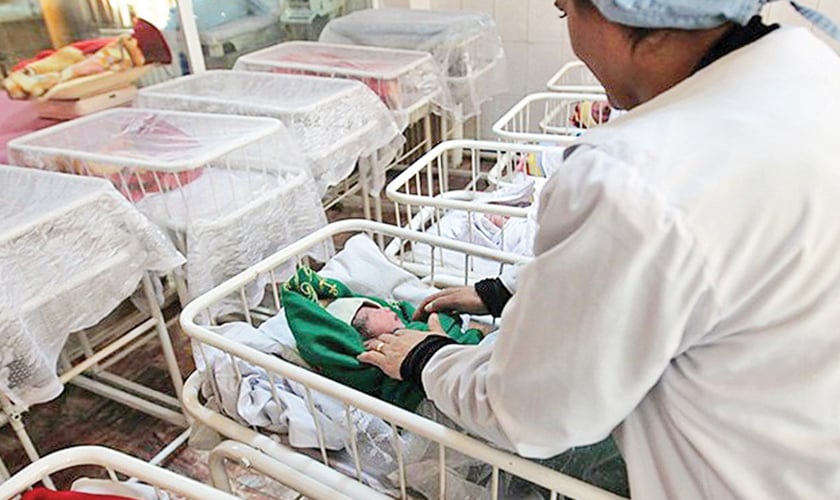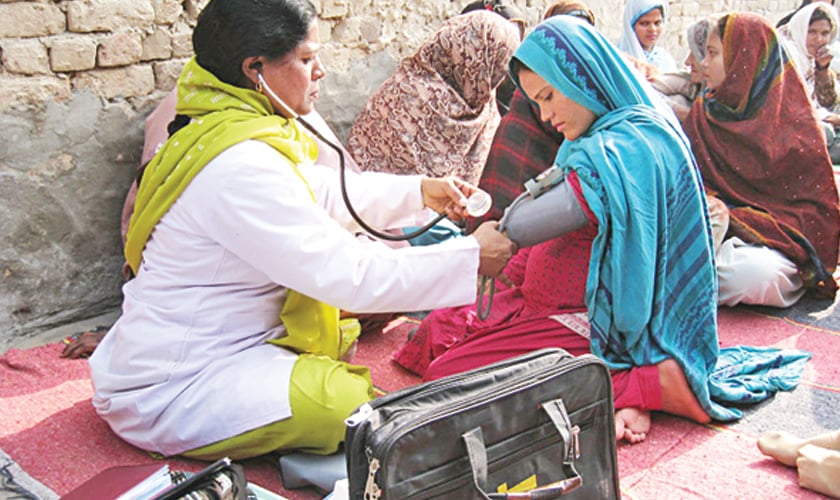In our part of the world family planning is often ignored, especially in the rural areas of Sindh. You! takes a look...
In our part of the world family planning is often ignored, especially in the rural areas of Sindh. You! takes a look...
Unplanned pregnancies and a woman’s ability to space and limit her pregnancies have direct impacts on her health and well-being. Unfortunately, a major part of our society still considers family planning immoral and against religious laws.

Most of the families residing in the villages of interior Sindh are associated with agriculture and work for more than eight hours a day in the fields. Due to poverty and lack of resources, the women also work in the fields along with their men on meager wages. Because these women are occupied with work at home and in the fields, they find it difficult to take care of their children and themselves. They return home after completing their jobs while carrying packs of grass fodder or fuel-wood on their heads even during pregnancy and at the time of delivery. Working in the fields not only takes a toll on the health of mother and the baby but also these expectant women face problems such as premature or abnormal deliveries. And at times even lose their lives.
Sindh Population Policy 2016 draft shows that the population of Sindh has doubled in less than 29 years (1981-2010) and will further escalate in the coming years. According to Dr Talib Lashari, Technical Advisor, Costed Implementation Programme (CIP) of Sindh Population Welfare Department, Sindh’s birth rate is 1,240,467 per year. “It is not only causing poverty, but all the resources present are becoming insufficient for people. CIP is working with various government and nongovernmental organizations to implement Family Planning 2020 (FP 2020), which was set by FP 2020 Summit in London in 2012, with the aim to approach 69 targeted countries,” shares Lashari.
“The current stats show that 45 per cent children suffer from malnutrition, 1,73,900 infant deaths were reported in the last few years, 8500 maternal deaths and 74,300 deaths of children under the age 5. With 1.9 per cent growth in Pakistan’s current population at 189 million, it is estimated that the percentage will go up to 310 million by 2050. This will also result in the increase in social-economic demands,” adds Lashari.
Even though, the percentage of birth rate is way too high, the initiatives by the Sindh government are a step forward in the right direction. Moreover, they have been investing to achieve global agenda of controlling birth rate in the province. This is not all! The government has extended a move with district health departments and non-government entities, which are working on health, activating Lady Health Workers (LHWs), Lady Health Visitor (LHVs), Community Midwives, Rural Health Centres (RHCs) and Basic Health Units (BHUs), but the challenges are still there which need to be resolved.
Also, Sindh has 628 Family Welfare Centres (FWCs), which are said to be the pillars of population welfare programme. But the reports collected from the non-governmental organizations working in the health sector, reveal that a majority of FWCs have been non-functional for long.
In order to know more about the situation in Sindh, You! spoke to Lady Health Worker (LHW), Rizwana Mumtaz, who is part of a strong network comprising 22,575 LHWs and 770 Lady Health Supervisors (LHS) working in Sindh. Reportedly the LHWs have approached almost 50 per cent of women to address the issue of family planning. There are around 22 LHWs in each union council in rural areas, each one deals with at least 1500-2000 married women. These workers reach out to women at their homes, providing them with effective temporary contraceptive methods.

“I work in different areas of Sindh. In Hala, Matiari district, I have successfully influenced at least 35 married women, most of whom have more than 7 children. They followed my guidance to stop conceiving children further,” she says with pride.
According to her, it took at least two years to convince those women that it was in their own interest. “However, majority of the younger women were unwilling to accept any guidance to ease their lives and take care of their reproductive and general health. Many of them did not know the importance of breast feeding required for a specific period of two years, essential for the baby’s growth and nurturing.”
There are around 1300 families, residing in huts or scattered on agricultural fields near Hala. “I visit them to administer vaccination and provide them help regarding reproductive health. It is one of the most populous villages in the district and I try my best to convince them to have fewer children but they are reluctant to accept it despite being poor and unable to feed their babies,” informs Mumtaz.
On the issue of family planning, Rizwana Mumtaz cited the example of a fellow LHW. “When she got married, her husband rejected all her arguments regarding birth control. Having kids one after the other without any gap not only put her life in jeopardy but her child’s life as well,” she shares.
“Even educated families keep on producing kids in order to have desired sex of child. In this situation, we (LHWs) are unable to convince families to adopt family planning methods. My fellow LHWs and I often come across women who want us to create awareness among mothers-in-law and husbands as these women are too shy to discuss such matters,” adds Mumtaz.
“We work with commitment and dedication and try our best to promote the use of various birth control methods. The success rate is good too but the government does not offer us any reward and we do not even get our salaries on time. And there is no job security either. What we do helps achieve the socio-economic and development goals and progress in the province but unfortunately, we don’t get anything in the end,” concludes Rizwana Mumtaz.